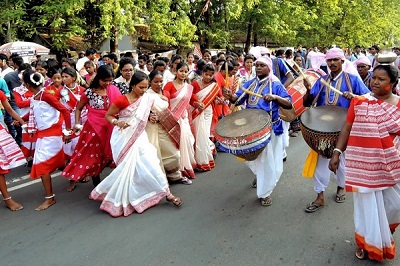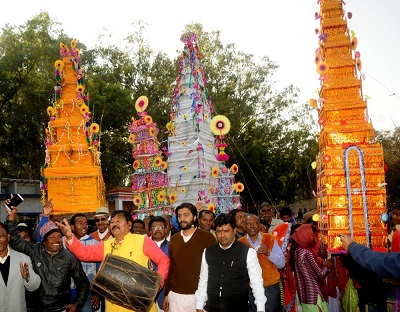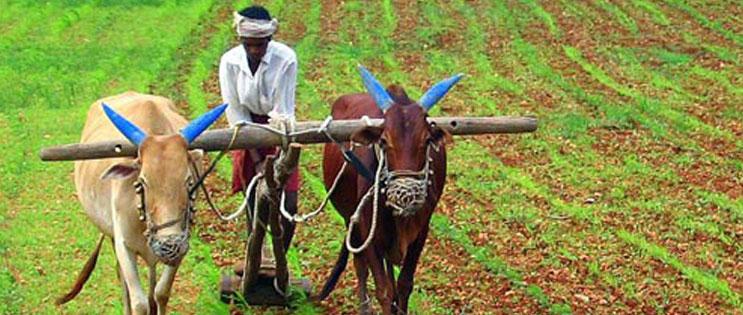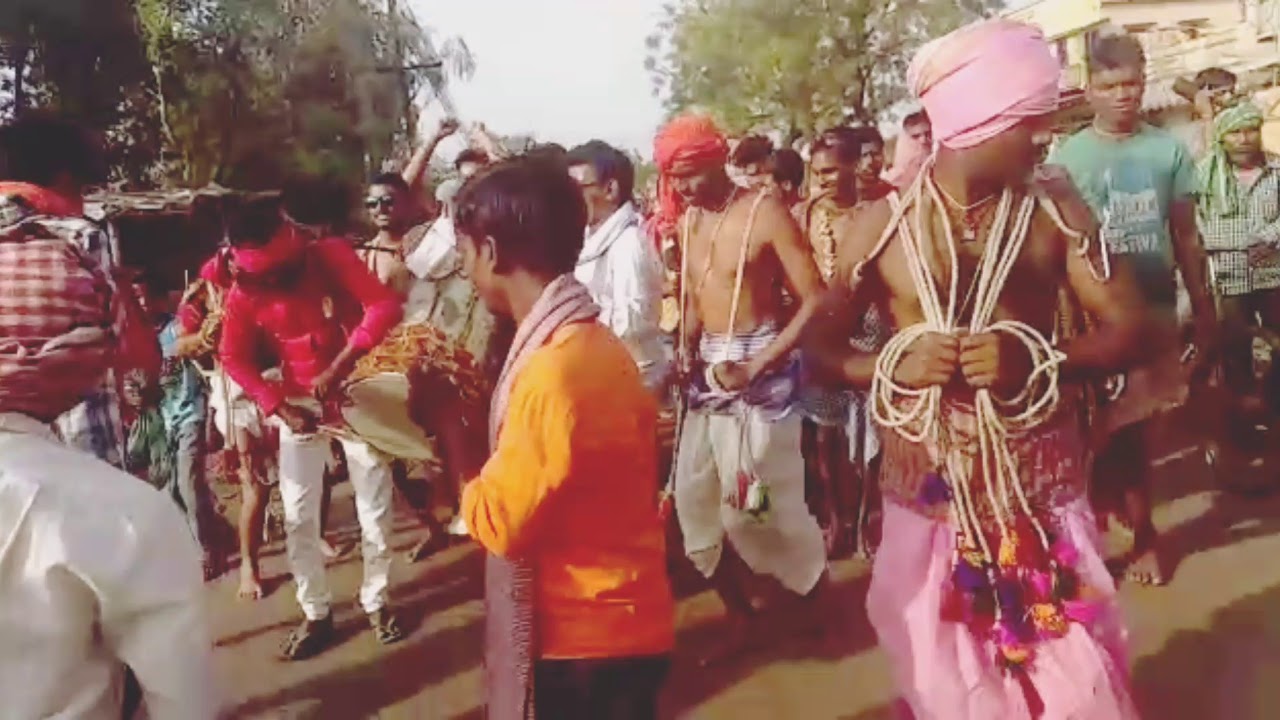

The Karam festival is a worship of Karam devta, the god of power, youth and youthfulness. Karam is held on the 11 of moon in Bhadra month. Groups of young villagers go to the jungle and collect wood, fruits and flowers. These are required during the Puja of Karam God. During this period people sing and dance in groups. The entire valley seems to be dancing with the drumbeatth day of the phases. This is one of the rare examples of such a vital and vibrant youth festival in Jharkhand's tribal area.
This is the main festival of the tribal population of Jharkhand. The verbal meaning of Sarhul is worship of the Sal tree. They also worship the Sal tree, which is believed as the abode of Goddess Sarna who protects the village from all kinds of natural calamities and disasters.


This festival is mostly seen in the area between Bundu, Tamar and Raidih area of Jaharkhand. This belt has a great history during India's independence movement. TUSU is a harvest festival held during the winter in the last day of Poush month. It is also for the unmarried girls. Girls decorate a wooden/ bamboo frame with coloured paper and then gift it to the nearby hilly river. Although there is no documented history available on this festival but it has huge collection of scintillating songs full of life and taste. These songs reflect the simplicity and innocence of tribal people.
Rohini is perhaps the first festival of Jharkhand. It is a festival of sowing seeds in the field. Farmers starts sowing seeds from this day but there is no dance or song like other tribal festivals but just a few rituals. There are some other festivals like Rajsawala Ambavati and Chitgomha are also celebrated with Rohini.


This festival comes between the period of spring and summer. Among the tribal people of Jharkhand, Bhagta Parab is best known as the worship of Budha Baba. People fast during the day and carry the bathing Pahan the priest, to the tribal mandir called Sarana Mandir. The Pahan sometimes called Laya, gets out of the pond, the devotees make a chain, locking their thighs with each other and come forward to offer their bare chest to Laya for walk over. After worship in the evening, devotees take part in dynamic and vigorous Chhau dance with lots of gymnastic actions and masks. The next day is full of primitive sports of bravery. The devotees pierce hooks on skin and get tied at one end of a long horizontal wooden pole, which is hanging on the top of a vertical Shal wood pole. The height goes up to 40 feet. The other end of the pole which is connected with a rope, pulled around the pole by the people and the tied devotee display the breath-taking dance in the sky. This festivals is more popular in the Tamar region of Jharkhand.
Sohrai is known for the care of domestic animals such as cows and buffaloes. Since these animals are significant in an agricultural society, taking proper care and welfare of them form important ritual of Sohrai. It is celebrated immediately after diwali, on the new moon day. In the evening, earthen lamps are lighted. The next day the cattle are washed, vermilion mixed with oil is put on the cattle and they are garlanded. The festivities include such games as bull fights.
